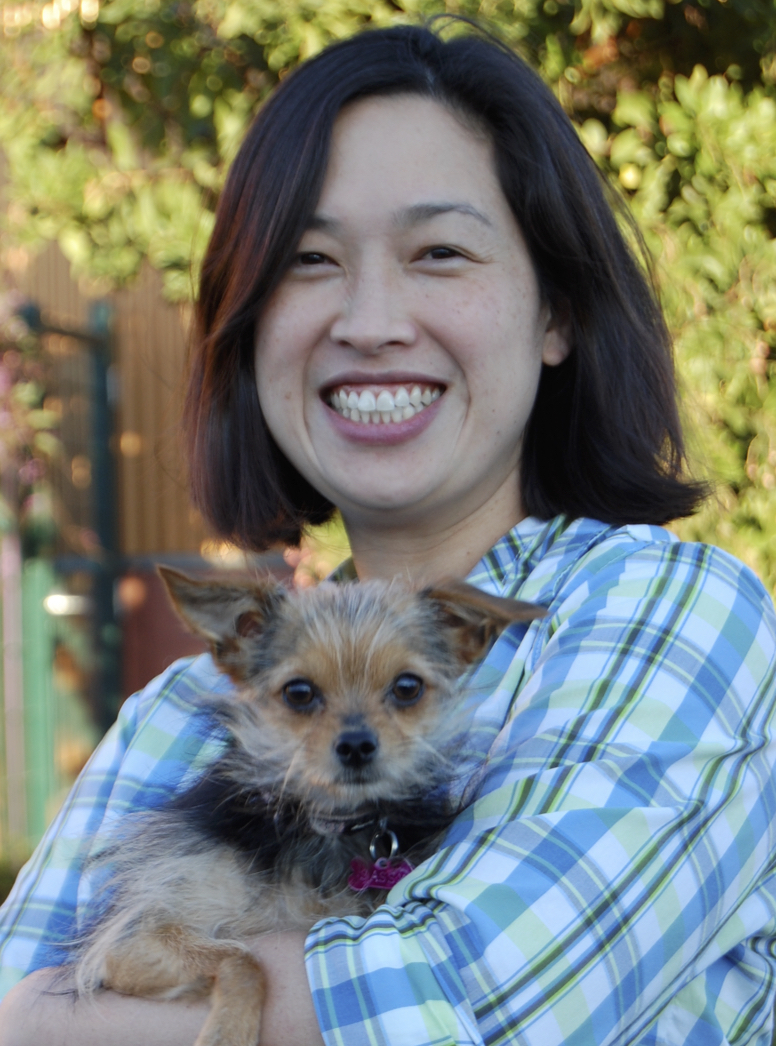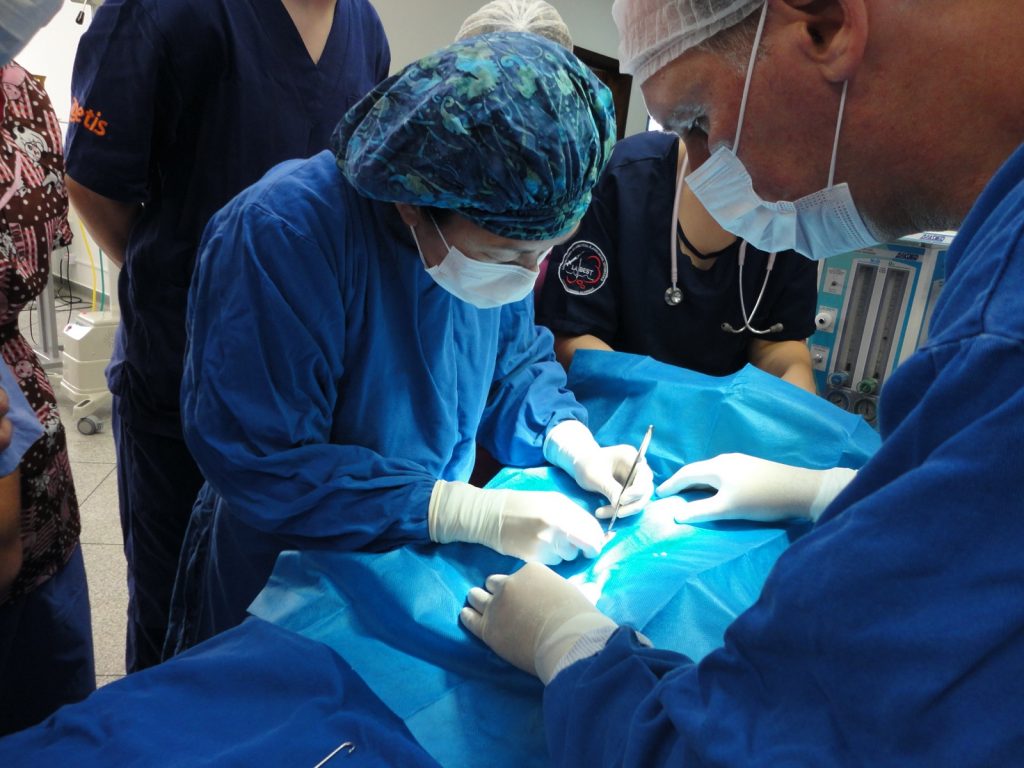News, ideas & inspiration from industry leaders

Member Spotlight: Get To Know Dr. Cristie Kamiya
What happens when your Chief of Shelter Medicine has a DVM and an MBA? You just might become the first-ever organization to meet all 543 of the Association of Shelter Veterinarians’ standard-of-care guidelines….
Name: Cristie Kamiya, DVM, MBA
Member of The Association for Animal Welfare Advancement since: 2017
Organization: Humane Society Silicon Valley
Title: Chief of Shelter Medicine
Q&A with Dr. Cristie Kamiya
The Association: What do you want other members to know about your organization?
Dr. Cristie Kamiya: Our mission, to save and enhance lives, both two-legged and four-legged, strives to ensure that no companion animals needlessly lose their lives, and that no people are forced to give up their pet because they cannot afford basic care or veterinary services.
As the first shelter to meet the standard-of-care guidelines put forth by the Association of Shelter Veterinarians, and by investing in our programs, partnerships and expertise, we continue to increase our impact in three core areas: supporting people and animals in our community; expanding our lifesaving impact; and advancing animal welfare.
The Association: What do you think is the most important part of your job?
Dr. K: The most important part of my job, in addition to contributing to the strategic direction of the organization, is to ensure we have the necessary resources to successfully execute our mission—while ensuring that our animals and people are taken care of in the best possible way.
The Association: What’s the biggest challenge you are facing right now?
Dr. K: There are so many unknowns right now with the pandemic, and the uncertainties of the short- or long-term make it challenging to plan for our future, so we must stay nimble and able to quickly pivot and change as the needs of our community and our environment change.
Another interesting (and great) challenge we’re facing is that the demand for adoptable pets has increased, and at times, exceeds our supply! This is good news to us, because it gives us the ability to continue to help many of our partner shelters by continuing to transfer in at-risk animals, even during these challenging times.

The Association: Share a success your team has had this year.
Dr. K: I am very proud of all of the things our team has accomplished in the past year, and especially in the past 6 months. They have been troopers, as we’ve rewritten pretty much every single process in the shelter due to shelter-in-place and social distancing requirements. In a very short period of time, the team has rallied to create and implement new adoption, foster, medical, intake, behavior, and animal care protocols to keep our staff, volunteers, and community members safe, while still keeping to our commitment to care for the homeless pets in our community.
We have also had the opportunity to expand our support to our community through our Pet Pantry program and emergency boarding for pets of people affected by the pandemic or California fires.
The Association: HSSV is known for being the first agency to meet all the ASV Guidelines under your lead. Of the changes you made at that time, which had the greatest impact? Several years later, how are you seeing the effects of implementing the Guidelines?
Dr. K: If there were just one thing that could have the most significant and lasting positive impact in the shelter, it would be putting portals in all of the cat cages. It feels counterintuitive to decrease the functional cage space in a shelter by half. However, the positive effects of giving each cat more room has done wonders for us by decreasing the incidence of shelter-acquired URI to almost nothing, and decreasing the cost and length of stay associated with treating URI. It was amazing! Within a month or two of “portalizing” our cat cages, we saw our URI rate plummet, and our URI isolation rooms sat completely empty. Because of this new capacity, we were able to start transferring in cats with URI from other shelters to treat in our facility.
Another bonus of going through the exercise of completing the guidelines was the learnings we gained through improving our collaborative and cross-functional problem-solving skills. Even a few years later, we are still utilizing those lessons learned in partnering inter-departmentally to tackle new problems or goals. Since starting the ASV Guidelines journey 5 years ago, we have been able to increase our life-saving capacity by over 50%, and we continue to find ways to save more lives. The skills we learned were also fully utilized during our response to COVID-19.
The Association: What is keeping you healthy and resilient these days?
Dr. K: Working from home poses new challenges with maintaining work-life balance, so keeping up those boundaries is much more intentional now. Our garage has been converted to a gym to keep up with regular workouts, and since traveling is no longer on the books anytime soon, gardening, which had been impossible with my previous travel schedule, is now a big part of my daily routine (and meals).
The Association: What’s one thing—industry-related or not—you learned in the past month?
Dr. K: There is always a silver lining in any situation, no matter how dire it may seem at the time.
The Association: What’s your hidden talent?
Dr. K: Growing rare tropical aquatic and terrestrial plants in glass boxes.
The Association: How have you benefited from your involvement with The Association for Animal Welfare Advancement?
Dr. K: The Association is such a great resource! Members have access to so much great information and continuing education opportunities, both virtually and through the conferences. This has also been a great way to meet other leaders in animal sheltering across the country.
The Association: Knowing what you know now, what advice would you give to who you were ten years ago?
Dr. K: Don’t stop taking those giants leaps outside of your comfort zone, and make sure to maintain those work-life boundaries.
More on Dr. Kamiya
Connect with Dr. Kamiya on LinkedIn
Register for the September 9 Webinar with HSSV: Scaling High Quality, High Volume Foster Care in Times of Crisis
Watch the webinar recording about HSSV: Getting to Model Shelter: One Shelter’s Journey to Completion of the ASV Guidelines
Top photo: Dr. Kamiya with Sassy


